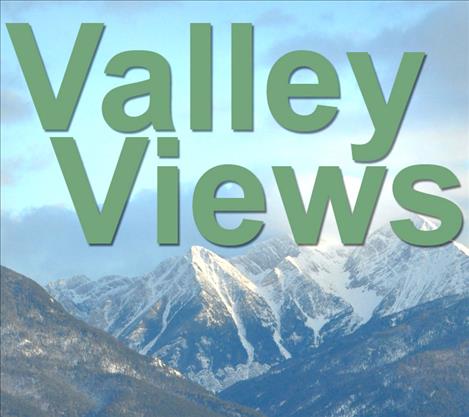Legislature must address statewide infrastructure needs
Hey savvy news reader! Thanks for choosing local.
You are now reading
1 of 3 free articles.
At the end of the legislative session we wish to say thank you for times legislators worked across the aisle to pass sound legislation for all Montanans. Like minds came together and agreed upon many issues, from public lands to suicide prevention.
Also, legislation was passed that addresses some of our crumbling infrastructure. Over $200M in cash was approved for ongoing infrastructure projects, which qualify for hefty federal matches. With the gas tax, projected to provide $35M - $45M/year, soon we’re talking about real infrastructure progress.
Or are we? Here is where we say “a pox on both your houses.” Revenue that will be realized by these measures is but a fraction of the $13 billion worth of infrastructure needs that have accrued as a result of kicking the infrastructure can down the road each session. We call our legislators out on a few of their points:
1. The infrastructure bill that failed at the end of the session was a bonding, not infrastructure bill. Of course it was an infrastructure (as defined in the Merriam-Webster dictionary) bill. The bill sought bonding as a measure to pay for necessary infrastructure that does not otherwise have a source of revenue.
2. Campus building restoration and repair should be financed through a Long Range Building Program; a valid point. However, this and other state programs have dried up, causing universities and public school advocates to push for having these restoration projects placed in an infrastructure bill. Legislators can point their fingers at the executive branch and scream poor fiscal management, but the fact is that revenue has declined while needs persist.
3. In order to ensure that the state does not “pit communities against each other,” the legislature must pass two infrastructure bills (one targeting urban projects, the other, rural) or neither at all. We understand that going for broke is an option, but these tactics were punitive and produced an additional cohort of “losers.” This approach is hardly the high road.
4. We are saddling our grandchildren with debt they didn’t ask for. Yup. At the same time they will be driving on safer roads, attending schools and using public facilities that are safe, up-to-date, and are important to businesses considering moving to Montana. These are pro-growth benefits for a debt payment on an $80 million plus interest infrastructure bond for 20 years that, on average, translates into approximately 50 cents per Montanan per month. Without this needed investment now, inflation will be working against us, and the same needs will cost our children twice as much in twenty years.
5. Bonding is appropriate for profit-generating business, not for non-profit generating entities such as states; a ridiculous argument. Municipalities, school districts, and families are not-profits, yet they engage in bonding when economic circumstances are favorable. Homeowners take out loans to repair crumbling infrastructure (an aging roof ). Interest rates will never be lower. Bonding as part of our fiscal mix makes smart business sense for addressing Montana’s citizens’ needs.
In the debate about unfunded but necessary infrastructure projects, both sides refused to recognize valid points by the other. These are the questions that must be addressed:
If not the state’s responsibility to build a veteran’s home, repair university buildings, create a museum for historic Montana artifacts, repair and update school district buildings … then whose? If not bonding to address some of these issues, then what viable alternatives have been offered? (remembering it will take years to save for the $80M sought in the bonding bill).
Why was the camaraderie/ common-sense for the aforementioned bipartisan efforts not extended to the infrastructure problems that have bedeviled our state for many years?
How can we insure that we optimize the use of our tax dollars for the good of all Montanans, as identified by the legislature and governor?
People/businesses move to areas with good infrastructure that provide a safe, healthy and stimulating environment to raise their family and do business. Our beautiful and unparalleled landscape isn’t enough draw when schools are run down and roads are bad.
We hear rumblings of a special session. Montana legislators must leave their animus at the door and find common ground. Solve the infrastructure conundrum.
















